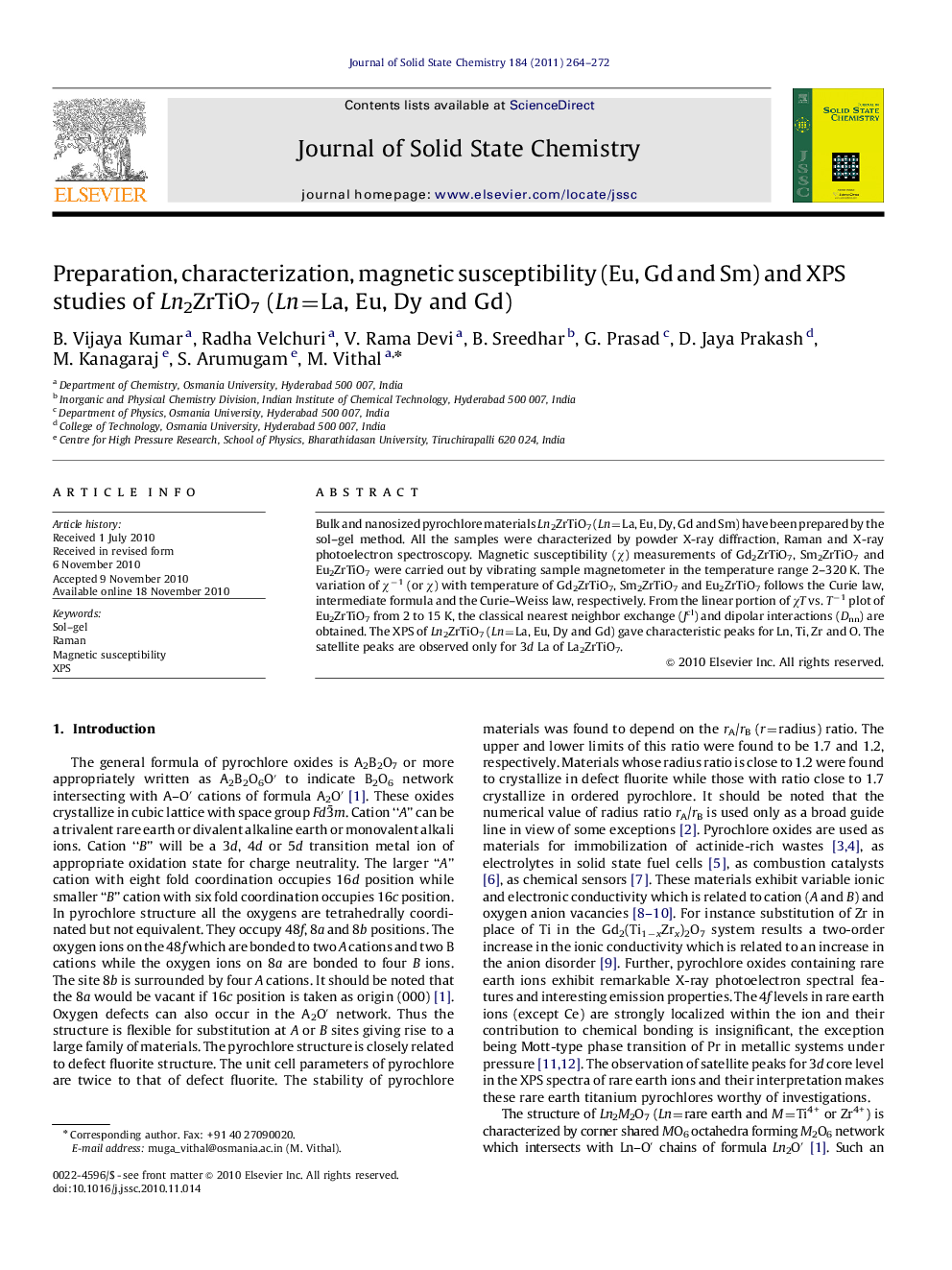| Article ID | Journal | Published Year | Pages | File Type |
|---|---|---|---|---|
| 1330997 | Journal of Solid State Chemistry | 2011 | 9 Pages |
Bulk and nanosized pyrochlore materials Ln2ZrTiO7 (Ln=La, Eu, Dy, Gd and Sm) have been prepared by the sol–gel method. All the samples were characterized by powder X-ray diffraction, Raman and X-ray photoelectron spectroscopy. Magnetic susceptibility (χ) measurements of Gd2ZrTiO7, Sm2ZrTiO7 and Eu2ZrTiO7 were carried out by vibrating sample magnetometer in the temperature range 2–320 K. The variation of χ−1 (or χ) with temperature of Gd2ZrTiO7, Sm2ZrTiO7 and Eu2ZrTiO7 follows the Curie law, intermediate formula and the Curie–Weiss law, respectively. From the linear portion of χT vs. T−1 plot of Eu2ZrTiO7 from 2 to 15 K, the classical nearest neighbor exchange (Jcl) and dipolar interactions (Dnn) are obtained. The XPS of Ln2ZrTiO7 (Ln=La, Eu, Dy and Gd) gave characteristic peaks for Ln, Ti, Zr and O. The satellite peaks are observed only for 3d La of La2ZrTiO7.
Graphical abstractSm2ZrTiO7 does not follow the Curie or the Curie–Weiss law. The effective magnetic moment is found to be 0.768 BM (at 300 K), which is smaller than the free ion moment 1.3–1.4 BM.Figure optionsDownload full-size imageDownload as PowerPoint slideResearch Highlights► Bulk and nano Ln2ZrTiO7 (Ln=La, Eu, Dy, Gd and Sm) have been prepared by the sol–gel method. ► The broad Raman lines are attributed to cation disorder and small crystallite size. ► XPS of Ln2ZrTiO7 exhibit characteristic X-ray photoelectron spectral features. ► Magnetic moment of Gd2ZrTiO7 is obtained from magnetic susceptibility and ESR spectra.
